Illusionary Intimacy
Dawn. The wondrous vibrancy of the Atlantic coast. Colors abound.
Isolated, wandering in the rich wilderness, Paul Bennett stops to bear witness. In a moment, the sun breaks through a castle of clouds, creating a magnanimous display that is imprinted on his painter’s mind. He has ventured here to discover all this sheer beauty, nature’s landlord.
In a rare opportunity, I catch Paul in between canvases. He is currently working on a new figurative piece, a stark departure from his abstract seascapes. I ask the most obvious question that comes to mind:
Why art, painting?
I’ve always been creative, whether that was with words, music or visually. Street art was my first encounter with the visual arts. That and album covers.
I had no direction once I left school. After a couple of years I signed up to a part-time college course in Art and Design. I had some great tutors and everything just clicked into place. The most important thing that really got me going was the freedom involved and the chance to explore and break boundaries. Art school was a bit stricter and the main focus was more centered on conceptualism, which is not really my thing. I had no ambition to try and be the smartest guy in the room or to give the super rich something to talk about while stuffing swan down their throats.
After leaving education I fell into graphic design for a while and it took seven years for me to get back in the painting studio. I’ve never looked back. But why painting? Why not? We’ve all got to make decisions, at points in time, and painting just happened to be mine. The key is to keep at it if you love it.
It’s quite evident that creativity resides well in Paul. I inquire about his particular style.
I work in two or three different styles, figurative, semi-abstract seascape, and abstract. The figurative is the one I find the most challenging, but the most rewarding. It’s also the subject that is seen (from the outside) as being more contemporary and provocative. The audience and response to the portraits is a lot different to that of my other styles.
The abstract paintings offer their own set of challenges and I was attracted to this style because it is more approachable. The abstract work is also more focused and suitable for a more corporate market as well as the home. It also offers more diversity with scale. The best thing is having a variety and being able to jump from one the other. It keeps it all fresh.
I’m always interested in how artists work, what makes their process special.
The tools I use are pretty standard. Brush, canvas, knife and oil, and occasionally gloss resin. I like to create a lot of texture but balance that out with calmer and flatter space. The most important thing is to just get stuck into the canvas. Just create. The rest will follow. Plenty of tea and the radio switched on is also a must.
What is your inspiration? I ask, and without skipping a beat his response is as brilliant as his work. [Is it brilliant if he’s just quoting Close? Another artist quoted Close last issue, I think.]
Inspiration is not really part of how I work. I will go and visit locations to get a feel for a place, but the work produced is a product of the process. I think Chuck Close sums it up better than I ever could:
The advice I like to give young artists, or really anybody who’ll listen to me, is not to wait around for inspiration. Inspiration is for amateurs; the rest of us just show up and get to work. If you wait around for the clouds to part and a bolt of lightning to strike you in the brain, you are not going to make an awful lot of work. All the best ideas come out of the process; they come out of the work itself. Things occur to you. If you’re sitting around trying to dream up a great art idea, you can sit there a long time before anything happens. But if you just get to work, something will occur to you and something else will occur to you and something else that you reject will push you in another direction. Inspiration is absolutely unnecessary and somehow deceptive. You feel like you need this great idea before you can get down to work, and I find that’s almost never the case.
 Naturally, I wonder how he sees how his work differs from his contemporaries.
It’s important for the work to be unique, but where the uniqueness comes from, well I’m not sure. I try to get a result that comes direct from myself rather than external influences. The journey I take when painting is to get Informed and motivated from what I have previously created. A single mark might be all it takes to dictate a whole piece of work or even a series. However, I am beginning to notice that I might be inspiring other artists a little too much, as I am beginning to see work that is very similar to my own. Probably unavoidable in this day and age, unfortunately.
Such an aware artist, surely Paul has some advice to extend to emerging artists worldwide.
Just keep at it and get the work in front of as many people as possible. Marketing is a very important part of the job. Just like any other carrier or industry, you have to get out of your comfort zone and put yourself in situations and places that are not quite natural to you. Also, create something that is yours. It’s important for the artist as well as the audience to know that they are looking at something that only you would have created.
And the future?
To be honest, I have no idea. I think that’s up to other people to decide. I just have to keep on doing what I’m doing until I do something else.
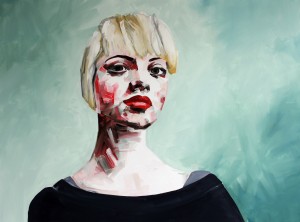
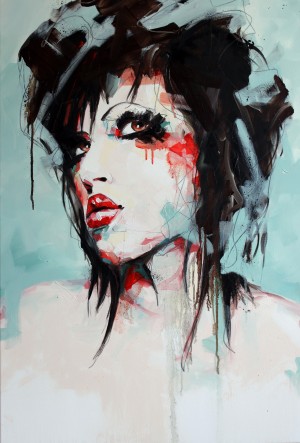
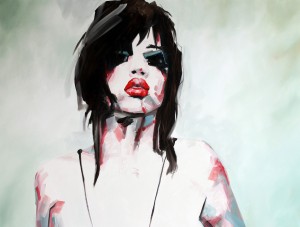
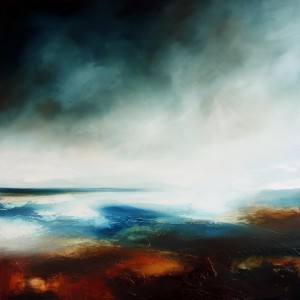
For more about Paul, visit his website – paul-bennett.co.uk


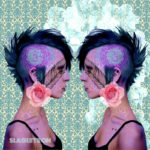
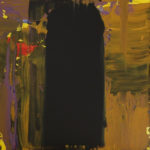
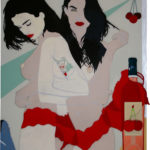
LEAVE YOUR COMMENT